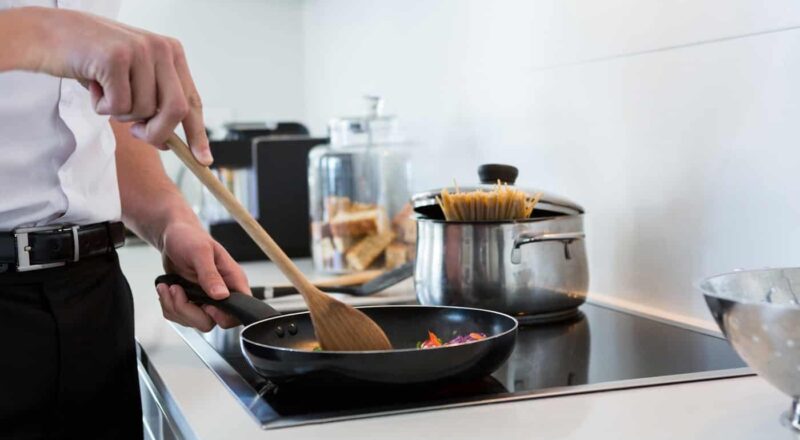Cooking with cast iron on an induction cooktop is a favorite among many kitchen professionals. The unique ability of cast iron to retain and distribute heat evenly makes it a valuable tool in the kitchen. However, knowing how to cool cast iron after induction is essential to maintain its integrity and ensure safety in the kitchen. This article will guide you through the best methods to cool your cast iron effectively.

Understanding Cast Iron’s Heat Retention
Cast iron is renowned for its superior heat retention properties. When heated on an induction cooktop, it can hold high temperatures for extended periods. This characteristic is beneficial for cooking but poses a challenge when it comes to cooling. Rapid cooling can lead to warping or cracking, so it’s vital to follow the right procedures.
The Induction Cooking Process
Induction cooking uses electromagnetic fields to heat the cookware directly, offering precise temperature control and energy efficiency. When using cast iron on induction, the cookware heats up quickly and retains that heat longer than other materials, making cooling strategies important.
Why Cooling Cast Iron Properly Matters
After cooking, allowing your cast iron to cool correctly is crucial. Improper cooling can lead to damage such as warping or the development of cold spots, which can affect its cooking performance. For more insights on preventing such issues, you can check out this guide on cold spots.
Safety Concerns
Handling hot cast iron requires caution. Cooling it properly not only preserves the cookware but also ensures safety in the kitchen by reducing the risk of burns or accidents.
Methods to Cool Cast Iron After Induction
Natural Cooling
Natural cooling is the simplest and safest method. Once cooking is complete, remove the cast iron from the heat and place it on a heat-resistant surface. Allow it to cool at room temperature. This gradual process helps prevent thermal shock and potential damage.
Using a Cooling Rack
A cooling rack can expedite the cooling process while still being gentle on the cast iron. Elevating the cookware allows air to circulate underneath, promoting even cooling without the risk of warping.
Cooling in the Oven
Another method is to place the cast iron in a pre-warmed oven (set to a low temperature) and gradually turn it off, allowing the cookware to cool slowly. This technique mimics the gentle cooling of natural methods while utilizing the oven’s ambient heat.
What to Avoid When Cooling Cast Iron
Rapid Cooling Techniques
Avoid exposing hot cast iron to cold water or ice. The sudden temperature change can cause thermal shock, leading to cracks or warping. For more details on preventing such issues, explore this resource on uneven heating.
Exposure to Moisture
Moisture can lead to rust formation. Ensure that your cast iron is completely dry before storing it away. Use a clean cloth to wipe away any residual moisture after cleaning.
Maintaining Your Cast Iron After Cooling
Cleaning Tips
Proper cleaning is essential after cooling. Use warm water and a soft brush to clean the cast iron. Avoid using harsh detergents or abrasive materials that can damage the seasoning.
Seasoning Your Cookware
After cleaning, apply a thin layer of oil to maintain the seasoning. This step is crucial for preventing rust and ensuring non-stick properties. For more tips on seasoning, you might find this external guide useful.

FAQs
Can I use cold water to cool down cast iron?
No, using cold water can cause thermal shock and damage your cast iron. It’s best to allow it to cool naturally.
How long does it take for cast iron to cool?
The cooling time can vary, but generally, it takes about 30 minutes to an hour for cast iron to cool completely.
Is it okay to leave cast iron on the induction cooktop to cool?
It’s better to remove it from the cooktop to ensure even cooling and prevent any accidental heating.
Understanding how to cool cast iron after induction is crucial for every kitchen professional. By following these guidelines, you can ensure the longevity and performance of your cast iron cookware. For more about cast iron and induction cooking, check out this external resource.
This article contains affiliate links. We may earn a commission at no extra cost to you.

